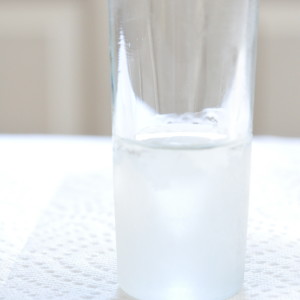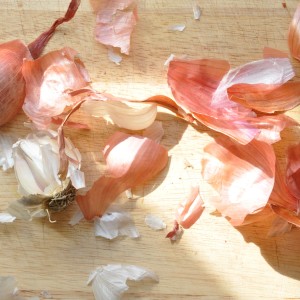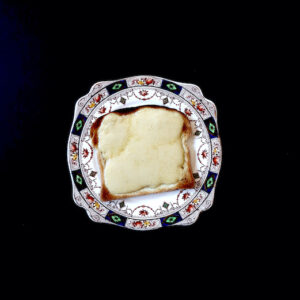Japanese Rice Bowl

When I moved to California in 1985, it was rather like being dropped on Mars. Everything–the landscape, the weather, even the English people spoke–was different. I wandered around in a state of perpetual culture shock.
The food was different, too. I’d never seen, much less tasted, authentic Chinese, Mexican, or Vietnamese cuisine. I couldn’t identify cumin, avocados, litchees, or Meyer lemons. Nor had I ever tasted sushi.
When a date took me to a Japanese restaurant, I was, as the English say, utterly gobsmacked. Everything was so delicious! So fresh! So light! What was this nose-tingling stuff? Wasabi? And sake! Who ever heard of warm wine? The meal was revelatory, even after my date drank a little too much of that warm wine, forcing me to flee in a cab.
Over time I acclimated to my new home, sampling its many cuisines and settling in the San Francisco Bay Area. Sadly, dwindling fish stocks and poor oceanic health have ended my days of heedless sushi gorging.
Today many markets label their seafood, making ecologically sound seafood purchases easier. If in doubt, talk to your fishmonger or consult the Monterey Bay Aquarium’s Seafood Watch Program: www.seafoodwatch.org.
The albacore tuna used in this recipe is local, sustainable, and seasonal. Yes, this sounds terribly purist and priggish, but things are scary out there.
This past week saw record-breaking heat in San Francisco Bay Area, with temperatures above 90 degrees. As we usually shelter beneath a cooling marine layer, otherwise known as fog, the homes were built accordingly. Nobody has home air conditioners. They’re simply unheard of.
The heat and I are not on good terms. I spent the week parked in front of a fan, red-faced and panting, guiltily reminding myself of those currently enduring far worse conditions. On that note, this is one of those days when saying nothing feels crassly insensitive. Putting aside our differences, which matter not: we remember. We always will.
—
Today it cooled enough for me to run errands. Driving home, I spotted the marine layer out past the San Francisco skyline, a thick cottony blanket of cooling fog. It was like seeing an old friend in a crowd. I want to shout and wave, but it would’ve looked weird. Anyway, it’s finally cooling off, and nobody is happier than I am.
So what does any of this have to do with a Japanese Rice Bowl? Well, sushi, or gently cooked fish, set atop a bed of rice with a scatter of cooling vegetables, is just the thing in unbearable heat.

This recipe is a mashup. The original idea comes from Diana Henry’s A Change Of Appetite. For the dressing, I consulted Naomi Duguid and Jeffrey Alford’s Hot Sour Salty Sweet and Seductions Of Rice.
Japanese Rice Bowl
Serves 2
White or brown rice
1/4 cup frozen peas
1/4 cup snow peas, sliced into pieces
1/2 cucumber, thinly sliced
a few pieces of fresh ginger, thinly shaved (see note)
2 scallions, white and light green parts only, thinly sliced
1 medium tomato, sliced (optional)
1/4 cup arugula or other peppery greens
3/4 pound sushi-grade, sustainable Albacore tuna
Dipping Sauce:
3 tablespoons fish sauce
1-3 tablespoons rice wine vinegar (to taste)
juice of one lime
1 small Thai red pepper, minced
Prepare white or brown rice and divide between two deep bowls.
Bring 1/2 cup water to boil in small saucepan. Briefly boil peas, drain, saving the water if you live in drought-parched land, and divide over the rice bowls. Blanch snow peas in saved water, divide. Repeat with remainder of ingredients.
Prepare dipping sauce by mixing ingredients. Start with one tablespoon rice vinegar and taste; if you like it, stop. Or add more. Use caution when slicing hot peppers; don gloves if your hands are sensitive. Avoid touching eyes, mouth, or nasal membranes.
Just before serving, remove fish from refrigerator. Using a thin-bladed, sharp knife, slice fillet into small, slender slices; think sushi, not hunks. Depending on the fish, your cuts may fall apart a bit. That’s okay. Don’t expect to be Jiro Ono. He’s devoted his life to the art of sushi. We’re just rank beginners.
About ginger: I’ve used three kinds.
–fresh, which I store in a jar of white wine in the fridge
–homemade pickled ginger, made using a David Tanis recipe from One Good Dish
–purchased pickled ginger, which I found fresh at my market near the fresh fish counter.
Serve with dipping sauce and small dishes of soy sauce, wasabi, and pickled ginger. After reading Nancy Singleton Hachisu’s Preserving The Japanese Way, I bought a bottle of Ohsawa Nama Shoyu Soy Sauce. Ten ounces of this stuff will set you back $10, and it’s worth every dime.
Consider this recipe a template: tweak it to suit your taste, area, and budget. If you aren’t fond of sushi, use chicken, fish, tofu, or even thinly sliced steak. Or leave out the protein entirely. Skip the dipping sauce and serve only the soy sauce. Add a little fish sauce. It’s hard to go wrong.





